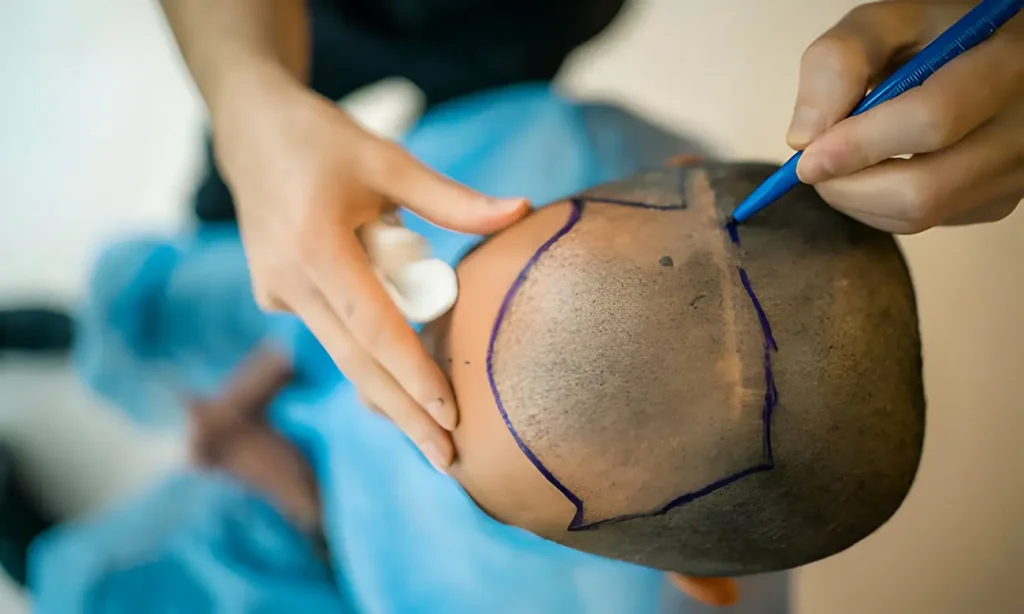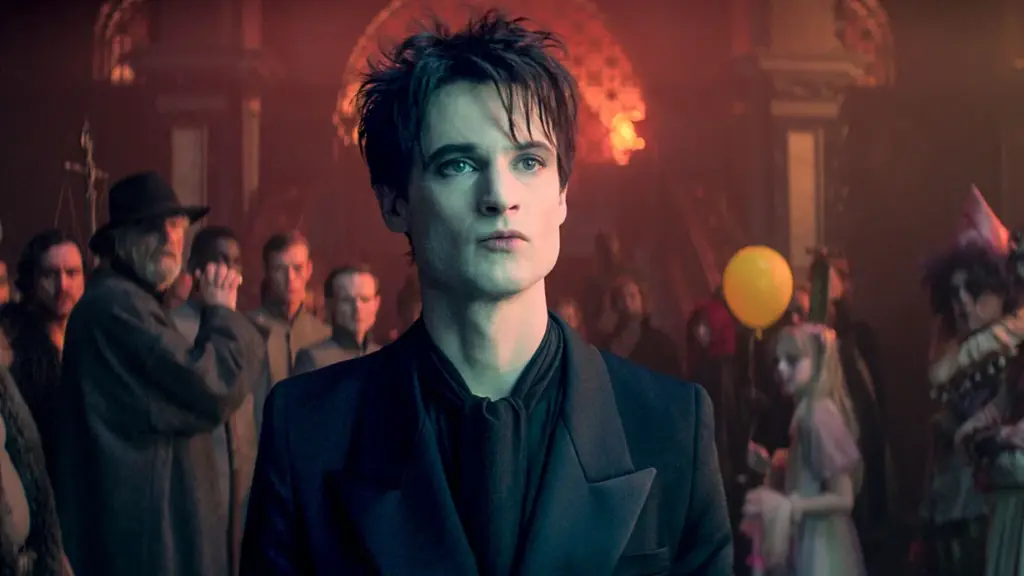Type and hit Enter to search
Experts in aesthetic surgery, dermatology, and beauty bring you the latest trends, research, and advice to help you make informed decisions about your appearance and health.
A web platform dedicated to aesthetic surgery, dermatology, and beauty, where expertise meets innovation, and your desires and needs become our mission. In a world where appearance and health go hand in hand, our platform leads the revolution, delivering the latest trends, research, and expert advice directly to you.
Our team consists of highly skilled professionals in the fields of aesthetic surgery and dermatology, committed to providing reliable information and guidance that will help you make informed choices about your appearance and well-being. We understand that every individual has unique needs and desires, which is why we approach each person with the utmost care and professionalism.
Powered by Aestetica Web Design © 2024
Chest Hair on Your Head? Body Hair Transplant: Your Ticket Back to the Hair Game
Balding Driving You Crazy? What if we told you the solution might be right on your chest (or beard, or back...)? Forget the old jokes about "hair plugs" - body hair transplantation has become a serious option for men lacking donor hair on their heads. Sounds crazy? Maybe, but the results are incredible.
We’ve all backed away from the mirror as if we’d seen a ghost. But hair loss isn’t just a bad hair day. It’s an emotional rollercoaster from denial (“It’s just bad lighting!”) to despair (“Why me?!”). Hair loss can impact self-esteem, mental health, and even social interactions. Because, let’s be honest, sometimes it’s hard to flirt when you’re worried someone will notice your bald spot.
Traditional Hair Transplant Methods: FUT and FUE – Salvation or Just Expensive Hope?
FUT (Follicular Unit Transplantation) and FUE (Follicular Unit Extraction) are two classic hair transplant methods. FUT is like moving an entire neighborhood, while FUE is more like selectively choosing the best residents. Both methods have their pros and cons. Unfortunately, sometimes there simply aren’t enough “residents” on your scalp to relocate. What then? Well, that’s where hair from other body parts comes in!
The Rise of Body Hair as an Alternative Source: Chest Hair to the Rescue
Things are getting interesting. What if we told you that hair from your chest, back, or even beard could be the key to thicker hair? Yes, you heard right. When head hair fails, body hair becomes the unexpected hero. This section will explain why this method has become so relevant and why it could be your ticket back to a lush mane.
Is Body Hair “Good Enough”? Debunking the Myths
“Chest hair on my head? Won’t that look weird?” You might think body hair is too coarse, too curly, or simply unsuitable for your head. It’s time to debunk those myths! Here, we’ll uncover the truth about body hair, explain why it’s actually suitable for transplantation, and why you shouldn’t dismiss this option just because of prejudice.
The Incredible Journey of a Hair: From Chest to Scalp
Imagine your chest hairs packing their bags for a move to your head – sounds crazy, right? But that’s exactly what happens in body hair transplantation. In this chapter, we’ll take you through the incredible journey of a hair, from its root on your chest to its new home on your scalp. We’ll uncover how this process works, which body areas are best suited for hair donation, and what you can expect after the procedure.
Hair Anatomy: From Root to Tip – A Mini Lesson in Trichology
Before we embark on the journey, let’s get to know the main player – the hair. Each hair is like a miniature tree, with its root (follicle), trunk (shaft), and crown (tip). The follicle is like a factory that produces hair, and the shaft is the result of that process. The hair tip is what we see and touch. Interestingly, hairs from different body parts have different characteristics – some are thicker, some thinner, some straight, some curly. It’s precisely these differences that make body hair transplantation so fascinating.
How Body Hair Transplantation Works: Step by Step – Relocation with a View
The body hair transplant process is like a well-planned move. First, the surgeon carefully extracts hair follicles from the donor area (most often the chest or beard). Then, these follicles are prepared for implantation, like carefully packing belongings into boxes. Finally, the follicles are implanted into the scalp area lacking hair, similar to how furniture is brought into a new home. The entire process requires precision and skill, but the end result can be transformative.
Which Areas are Suitable for Body Hair Transplantation?: The Search for the Ideal Donor
Not all body hairs are created equal. Some are better candidates for transplantation than others. Chest and beard hair are often the most popular choices due to their texture and density. However, hair from the back, abdomen, or even arms can also be used in certain cases. The choice of donor area depends on the patient’s individual needs and hair characteristics. The surgeon will carefully assess which areas are most suitable to achieve the desired results.
Recovery and Results: What to Expect After the Move
After body hair transplantation, a recovery period follows. This is the time when hair follicles adapt to their new environment and begin to grow. You can expect mild discomfort, redness, and swelling, but this is normal and usually subsides within a few days. The first results of the transplantation are visible after a few months, and the full effect can be expected after a year. It’s important to have realistic expectations and patience, as hair grows gradually. With proper care and maintenance, the results of body hair transplantation can be long-lasting and natural-looking.
The Aesthetic Potential of Body Hair Transplantation: More Than Just Filling in the Gaps
Forget about “hair plugs” and unnatural looks. Body hair transplantation has evolved into a sophisticated technique that allows for the creation of an individualized look. Skilled surgeons use hair from different body parts to achieve optimal texture, density, and hair growth direction. Chest hair can be used to fill in the crown, while beard hair can be used to shape the hairline or fill in sideburns. This technique allows for the creation of a natural look that perfectly blends with your facial features and personal style.
Case Studies: When Body Hair Saved the Day – Stories of Transformation
Meet Ivan, Marko, and Ana – three people who faced hair loss and found salvation in body hair transplantation. Ivan suffered from alopecia, an autoimmune disease that causes hair loss. Chest hair transplantation restored his confidence and brought a smile back to his face. Marko had scars on his scalp from previous transplants. Beard hair helped him cover the scars and create a natural look. Ana wanted fuller eyebrows, and leg hair transplantation made her dream come true. These are just some of the stories of transformation that prove the power of body hair in solving hair loss problems.
Ethical Considerations: The Limits of Aesthetic Surgery – When to Say “Enough”
While body hair transplantation offers numerous possibilities, it’s important to set ethical boundaries. Aesthetic surgery should be aimed at improving the quality of life, not creating unrealistic expectations or endangering the health of patients. In this section, we’ll discuss the importance of informed consent, realistic expectations, and a responsible approach to aesthetic surgery. Because, although body hair is a powerful tool, we must not forget that the health and well-being of the patient come first.
The Future of Body Hair Transplantation: What Does Tomorrow Hold? – A Glimpse into the Crystal Ball
Body hair transplantation is a relatively new method, but it’s already showing enormous potential. In the future, we can expect even more advanced techniques, such as using stem cells to grow new hair follicles or developing personalized treatments that adapt to the individual needs of patients. Also, it’s expected that body hair transplantation will become more accessible and affordable to a wider population. This is an exciting time for aesthetic surgery, and body hair plays a key role in shaping the future of this discipline.
Navigating the World of Body Hair Transplantation: Your Practical Guide
Body hair transplantation can be confusing – like a jungle with many unexplored paths. But don’t worry, we’re here to be your guide! In this chapter, we’ll provide you with practical advice and information to help you navigate the world of body hair transplantation. From choosing the right surgeon to financial questions and post-procedure care, here you’ll find everything you need to know for a successful adventure.
How to Choose the Right Surgeon: Key Questions – The Search for an Expert
Choosing the right surgeon is a crucial step in your journey towards thicker hair. To avoid pitfalls and find an expert who will provide you with the best possible care, ask these key questions:
- Experience and qualifications: How long has the surgeon been performing body hair transplantation? How many procedures has he/she performed? Is he/she certified by relevant medical bodies?
- Individual approach: Does the surgeon listen to your wishes and needs? Does he/she develop a personalized treatment plan?
- Before and after photos: Can you see photos of real patients before and after the procedure?
- Reviews and recommendations: What do other patients say about the surgeon? Can you get recommendations from people who have already gone through this process?
Preparing for the Procedure: What You Need to Know – Packing for the Adventure
Preparing for body hair transplantation is like packing for a trip. Here’s what you need to bring with you:
- Medical history: Inform the surgeon about all medical conditions, allergies, and medications you are taking.
- Quitting smoking and alcohol: Smoking and alcohol can negatively affect the healing process, so avoid them before and after the procedure.
- Dietary changes: A healthy diet rich in vitamins and minerals can help speed up recovery.
- Psychological preparation: Body hair transplantation can be an emotional experience. Talk to your surgeon or therapist about your expectations and fears.
Costs and Insurance: The Financial Side of the Story – How Much Does Beauty Cost?
Body hair transplantation is not cheap, but it’s an investment in your self-confidence and quality of life. The cost of the procedure depends on numerous factors, such as the number of transplanted follicles, the surgeon’s experience, and the clinic’s location. In this section, we’ll explore different financing options, including payment in installments, loans, and insurance coverage possibilities.
Life After Transplantation: Maintaining Results – How to Preserve Your Investment
After you’ve gone through body hair transplantation, it’s important to maintain the results. This includes proper hair care, using recommended products, and regular check-ups with your surgeon. In this section, we’ll give you tips on how to keep your new hair healthy and lush, and how to avoid potential complications.
Frequently Asked Questions: Your Burning Questions Answered
- Is body hair transplantation painful?
- How long does the procedure take?
- What are the potential risks and complications?
- Will my body hair grow back after transplantation?
- Can women also undergo body hair transplantation?
- Is body hair transplantation suitable for everyone?
Beyond Hair Transplant: Other Solutions for Hair Loss
- Medications: Finasteride, Minoxidil, and others
- Platelet-Rich Plasma (PRP) therapy
- Low-Level Laser Therapy (LLLT)
- Scalp Micropigmentation (SMP)
- Hairpieces and wigs
Embrace Your Natural Beauty: Alternatives to Surgery
- Shaving your head
- Embracing your baldness
- Styling your remaining hair
Taking the First Step: Your Path to a Fuller Head of Hair
If you’re considering body hair transplantation, the first step is to consult with a qualified surgeon. They will assess your individual needs and recommend the best course of action. Remember, body hair transplantation is not a magic solution, but it can be a life-changing option for those struggling with hair loss. With the right information and support, you can regain your confidence and embrace your natural beauty.
Biography of Dr. Gorana Kuka Epstein
Dr. Gorana Kuka Epstein is a specialist in plastic and aesthetic surgery. She is a professor at the Miami University School of Medicine, a diplomate of the American Board of Hair Restoration Surgery, and a doctoral candidate at the Faculty of Medicine at the University of Novi Sad. Dr. Kuka Epstein is the founder and director of the FoundHair Training program, the founder of the Center for the Treatment of Female Hair Loss, the director of the research department at the Foundation for Hair Restoration in Miami, and the founder of the Dr. Gorana Kuka Foundation.
Reference





